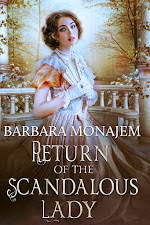I've wanted to try butter pie for years, ever since Paul McCartney mentioned it in the song "Uncle Albert/Admiral Halsey." A few years ago, I actually went to Lancashire, England, the home of butter pie, but unfortunately, I forgot about butter pie until we were leaving Lancashire. Dumb, completely dumb, but I was totally absorbed in visiting friends and historic sites and such, and getting to try mushy peas (absolute heaven if you're a pea freak like me). Now I'm writing a historical with a heroine from Lancashire, and there's a kitchen scene where she's baking…
No, not butter pie. When I first posted this blog on the Pink Fuzzies, she was making treacle tart, Harry Potter's fave dessert, because it's not a mealtime scene, and she's a lady and wouldn't be likely to make a meal anyway. She's stretching it being in the kitchen at all. (Afterward I decided she should make the Lancashire specialty, Eccles Cakes -- hence the blog of a few weeks ago -- although when all's said and done she'll probably be making Chorley Cakes, or nothing at all). Anyway. She and various other characters are drinking café-au-lait and discussing the French Revolution, and butter pie just didn't work. Still, my heroine and her pastry reminded me about butter pie, so I thought I'd finally make it myself… maybe mention it in this story or another… post about it on a blog.
Butter pie, as I understand it, is a potato and onion pie and a Lancashire specialty. It was or is commonly eaten on Fridays when Catholics don't eat meat. Well... I'm something of a pastry freak. I'll eat almost anything if it's enclosed in pastry, and since I also love potatoes and butter, and onions go with everything… I thought, perfect!
Recipes for butter pie seem to be few and far between, so I glanced over the only one I could find and altered it to suit my tastes and what I had in my pantry.
It didn't work. It was edible, but not very good. My fault, probably, for altering before trying the original, but I was in a hurry. It needed a lot of Worcestershire Sauce or HP Sauce or ketchup to make it tolerable. A little sauce, I'm fine with. A lot means there's a problem. I'm not posting the recipe today, and I'm going to try again. And again until I get it right, even if I have to go back to Lancashire and find a cook who knows how to make fabulous butter pie. Oh, the sacrifices one has to make!
The backup plan was to make treacle tart, but apparently I need golden syrup, which my local supermarket doesn't carry. I know where to look, but I haven't had time. So scratch that idea, too.
Bottom line: here's a recipe for Cranberry Bread with my usual notes and options:
2 c. whole wheat pastry flour (you can use all-purpose if you want)
1 c. brown sugar (you can use white if you must)
1.5 tsp. baking powder
1 tsp. salt (or a little less)
1/2 tsp. soda
1/4 cup soft butter
Rind of an orange, grated. About a teaspoon is right, unless you love the bitter orange flavor. Lemon rind is okay, too. Or you can skip the rind thing entirely.
3/4 cup orange juice. I've also used grape juice or a combo of grape and orange.
1 egg, beaten
1 cup chopped fresh cranberries. I think dried cranberries or raisins would do, but I haven't tried them. You might have to adjust the liquid a little, because fresh cranberries contain some juice.
½ cup chopped walnuts or other nuts
Mix the dry ingredients. Add the butter until blended. Mix the peel/juice/egg together and add to the dry ingredients. Do not over-mix. Add the cranberries and nuts. Bake in a greased loaf pan at 350 degrees for about one hour. It slices better if you let it cool for several hours.
Onward to butter pie!
.jpg)
































.jpg)




